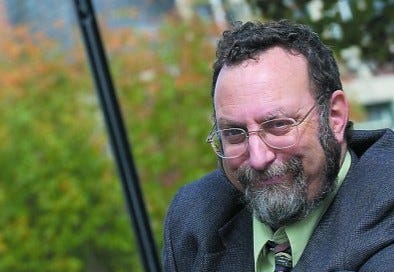Railroads usually have the bulk of American law on their side, and they know it. It’s hard to get them to refrain from doing anything they have their steely little hearts set on.
But Friday, the Union Pacific Railroad backed off under relatively mild, behind-the-scenes public pressure in a dispute with Highland Park and other northern Chicago suburbs.
I think I have an idea why.
The railroad planned to start Tuesday cutting every tree in its 100-foot-wide right-of-way north of Lake-Cook Road. It’s safer for the freight trains to have no wooden obstacles, living or dead, that might conceivably fall across the tracks, inciting derailments. And big piles of wet leaves slow down trains, believe it or not.
But it’s a pretty unpleasant prospect for some of the people whose houses back up to the tracks. A naked, treeless right-of-way makes a big difference in quality of life, and probably, in home resale value, for at least a mile and a half of homeowners in Highland Park. It’s a smaller group in Lake Forest, where most -- but not all -- of the houses backing up to the railroad have such enormous forested backyards that it doesn’t make much of a difference what’s on the other side of the fence.
But Friday, after a polite letter and quiet Zoom calls and such with a few municipal officials and residents, the UP put off their Illinois work, and agreed to start the clear-cutting in Wisconsin first, Highland Park City Manager Ghida Neukirch said. She said the railroad is willing to negotiate about how many Lake County, Ill., trees to take out, and how to police the ones that might remain, if any. No promises, however.
“It’s the right thing to do,” she said, adding that discussions are unlikely to drag on. “They’ve expressed an interest in getting this done before the spring thaw.”
“That, to me, is a good sign,” said Jody Schwartz, one of the Highland Park train-track neighbors. “I’m thrilled, just thrilled.”
She and her husband bought their house about 22 years ago. “Yes, we knew we were next to the trains,” she said. “But we also knew we were next to the trees.”
The trees soak up some of the sound from the freight trains, shield neighbors from view of them, and also from other stuff they don’t want to see, like car dealerships.
There are a lot of sick ash trees in the right-of-way, and Alysa Slay, another Highland Park train neighbor, is all for seeing them go. She said she’s been bugging the UP about taking them out for years, and has largely been ignored. But she wants them to leave the evergreens near her house, which are better at buffering, anyway, and seem to be in the pink.
Clearcutting the trees would bother more than neighbors: The Skokie Valley Trail runs along the tracks, and that bike path would be a lot less fun without the foliage. It also would lose the birdies that hang out in them. Thursday, Schwartz said she saw six pairs of cardinals flitting around beyond her fence.
There are other environmental considerations. A recent Swedish study indicated that when a railroad clear-cuts trees near tracks, the underbrush flourishes so much that it attracts quadrupeds like deer to eat it. And the trains hit a lot of them.
For track neighbors in Highland Park and Lake Forest -- the first two towns that the UP planned for tree-removal -- and burgs further north, it may seem a little nuts to clear-cut instead of being selective, like Neukirch and Mayor Nancy Rotering are asking: keep healthy trees within five feet of property lines, and others that are at least 8 inches thick.
“They (the UP) want to get it all done at once. I understand that,” Slay said. “But taking all the trees out, including the healthy ones, is like responding to gangrene in one foot by amputating both legs.”
The UP didn’t have time to tell me what their thinking was that led to the postponement. But the railroaders don’t have to say how weird and out of character it is for a railroad to think about even slightly compromising safety or timeliness in order to be very sensitive to things like residential property value and beauty.
When questions about that kind of accommodation are asked of them, the answer is almost always an easy “No.” Railroads are interested in moving trains as safely and efficiently as they can, and other considerations are rarely considered.
Within the last year, however, the Union Pacific has packed its website with hopper cars full of verbiage about how sustainable, diverse and community-minded it is or intends to be.
Maybe the landscape changes when the federal government threatens to finally get serious about funding what may be the biggest infrastructure improvement in American history.
The Union Pacific has a lot of rusty old bridges.
Sign up to get Irv Leavitt’s “Honest Context” free in your inbox by clicking on the subscribe button.




Thanks for the insight Irv.
I'm glad Highland Park raised this issue and hope the railroad continues to think about preserving the trees along the Metra route. Union Pacific covers a lot of lightly populated areas in in the freight part of its business, which may be one reason they usually don't think about preserving nearby trees. I enjoyed riding the UP line to the Lake Bluff station for years. I was generally very happy with the UP, but one time they did a horrendous job of cutting down trees near the Lake Bluff station. It looked like a disaster scene.